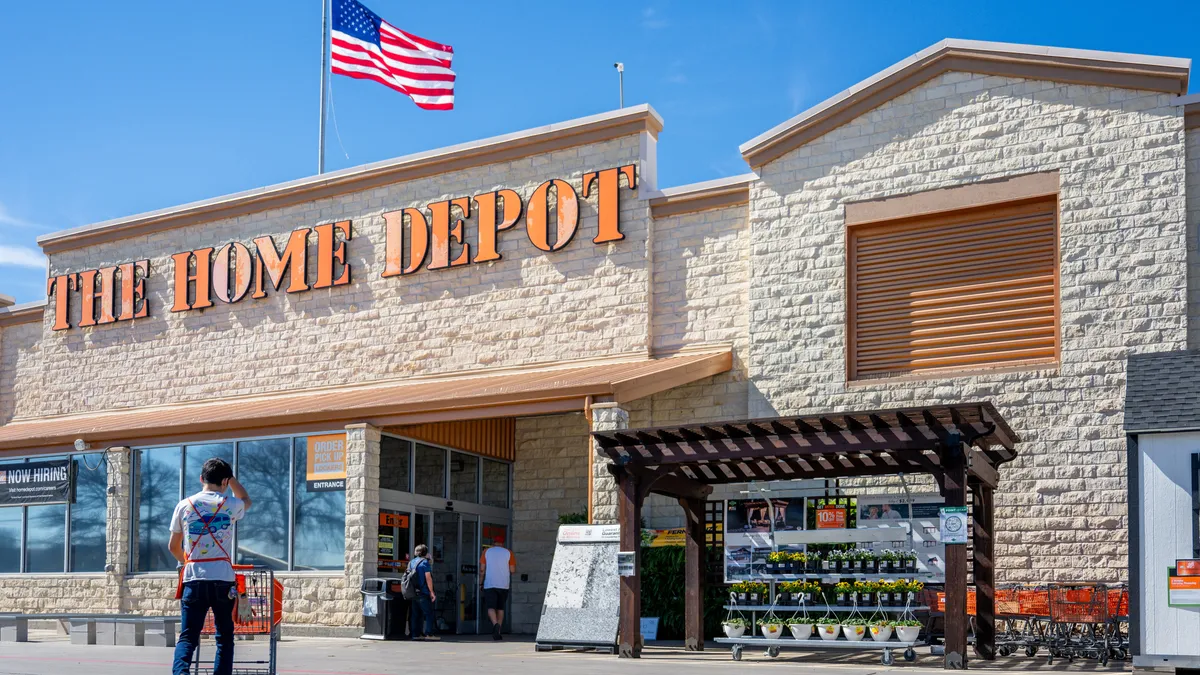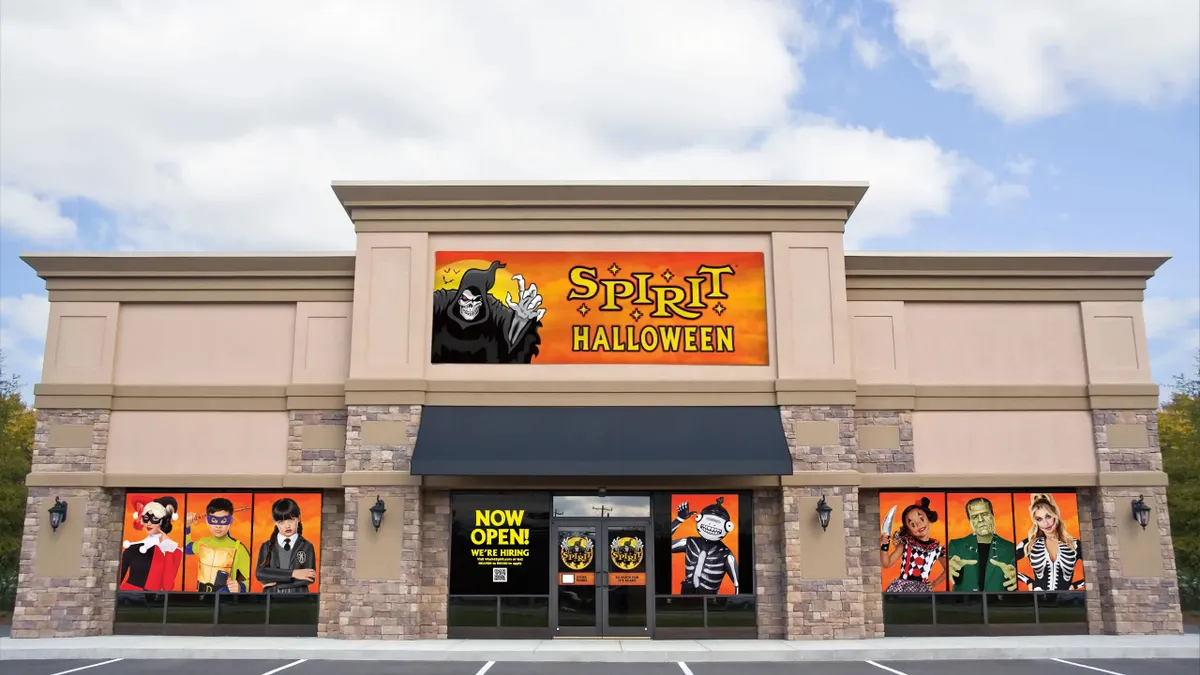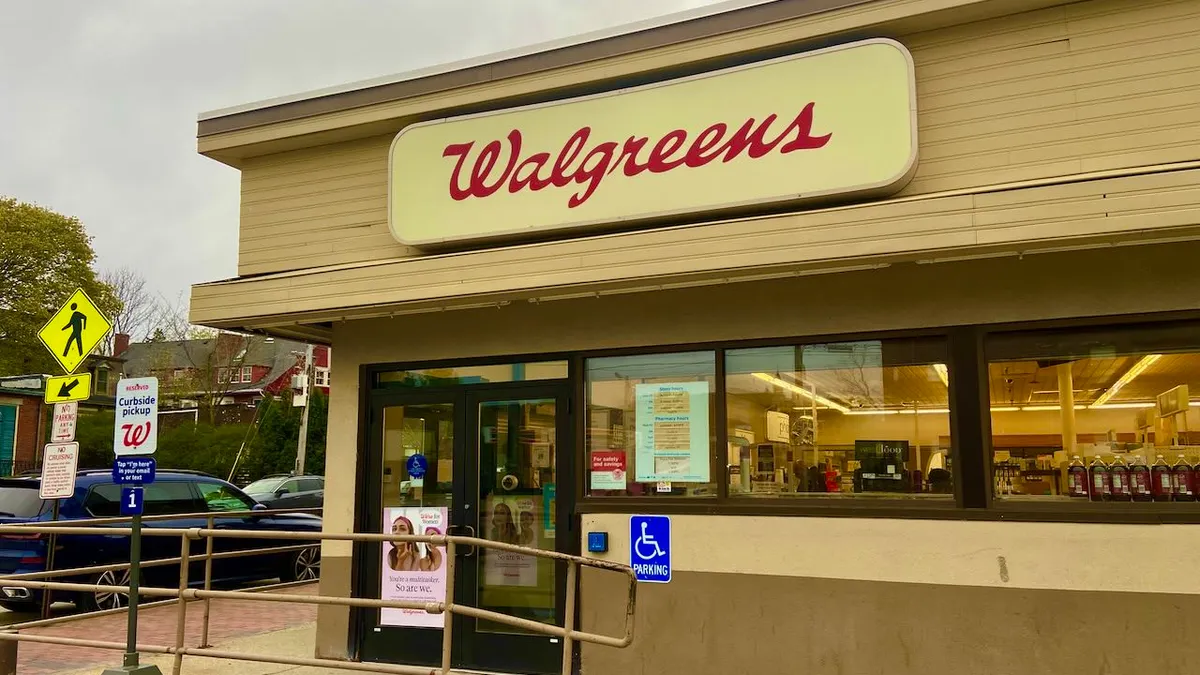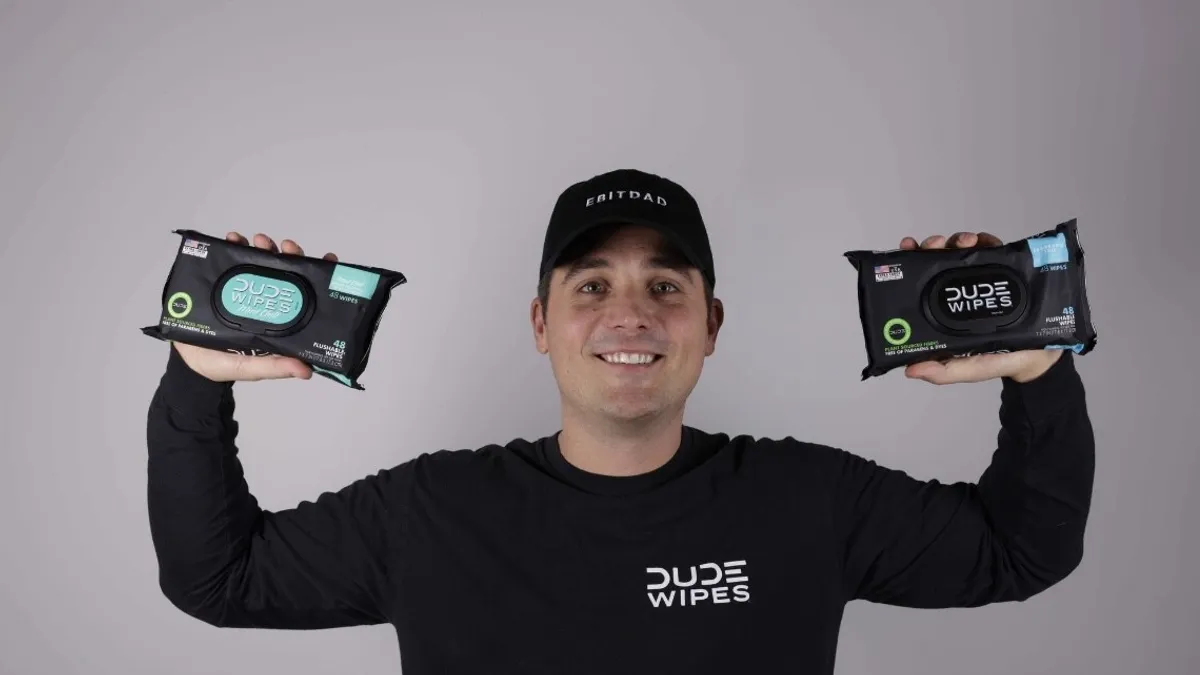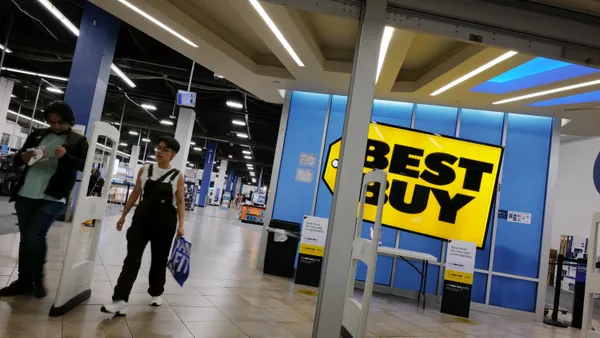Walmart sells a lot of clothes. Thanks to the pandemic and its own recent efforts, it may be poised to sell a lot more.
The retail giant was eclipsed in the segment early this year by Amazon for the first time, but it's still the second most likely place where U.S. consumers turn for apparel and footwear, according to an April report from Coresight. With Walmart designated an essential retailer in the early days of the pandemic, and specialty retailers and department stores closed, the retailer saw positive trends return to apparel sales, according to a May client note from Instinet. "For a category that is struggling across retail, we see this as a good sign," they wrote.
While Amazon sells a lot of underwear and other basics, and has also launched an effort at the other end of the spectrum with its new Luxury Stores (first partner, Oscar de la Renta), Walmart has honed its offer through partnership, acquisition, expansion, revitalization and divestment.
In recent years, the company bought a slew of online apparel favorites, including plus site Eloquii, funky sports site Moosejaw, ModCloth and Bonobos. While selling clothing online is notoriously difficult, the pandemic has helped push up digital sales in the category, making this play especially savvy.
Walmart stayed busy in 2019, too, bringing back New York boutique Scoop as its own private label, (but selling off ModCloth). And this year it teamed up with resale site ThredUp and, most recently, launched "Free Assembly," a men's and women's apparel brand developed by J. Crew and Bonobos alum Dwight Fenton.
"I remember when they added Scoop I thought, 'Someone up there knows what they’re doing and someone is really trying,'" Kristin Bentz, president of KB Advisory Group, said. "Scoop was the place, I would love being in there, it was so quintessentially New York. But what happens when you start acquiring all these brands that are too cool for Walmart? If it’s at Target you would easily accept it because of all the work they've done partnering with designers, and you would buy it."
That "someone" is probably Denise Incandela, Walmart senior vice president of Women's Group, Elevated and Online Brands, who arrived at Walmart three years ago from Aerosoles after stints at Ralph Lauren and Saks Fifth Avenue.
"Through our ongoing strategy of expanding our assortment for our customers, we’ve shown that we’re serious about establishing Walmart as a fashion destination," Incandela said in a blog post Monday. "And, now we’re doubling-down to offer customers something they couldn’t find at Walmart before — a fashion essentials-inspired brand for both men and women created by our in-house design team."
They're all private labels now
In reality, all of Walmart's acquired brands are private labels now.
At first, the retailer's acquisition strategy, which started with its $3 billion purchase of Jet.com four years ago and became an apparel shopping spree, seemed like a tale of two Walmarts. Only the millennial-focused Jet would sell goods from ModCloth and Bonobos, while Walmart's private labels got their own in-house revamp. There was rationale for this: fans of Bonobos and ModCloth bemoaned Walmart's takeover, and one brand sold by Moosejaw insisted it wouldn't sell through Walmart's site.
But Jet sputtered without gaining traction, and was finally nixed this year. CEO Doug McMillon told analysts that it was the Walmart brand, including its walmart.com website, that would dominate the company's resources because of the traction it has with consumers. As a result, Walmart has embraced the new brands as its own, and is selling them overtly through its site, and even some stores, rather than separating them out as online storefronts.
It's been a deliberate process, according to Carrie McKnight, Senior Director of Walmart US eCommerce Communications. "Our eCommerce strategy has always been about growth, testing and learning, and most importantly — giving our customers what they want, when and how they want it," McKnight said in an email. "The choices we continue to make are simply a natural evolution of that strategy."
The question remains whether Walmart can adequately revamp its stores to match its fashion goals, however.
"If they're going to do anything in store, Walmart's merchandising is terrible," Bentz warned. "You notice at Target, they've made everything a vignette, they know that Instagram rules the day."
GlobalData Retail Managing Director Neil Saunders agrees, making the same comparison to Target's merchandising chops. Another shift at Walmart, which at first seemed to be attempting to go upscale through its apparel acquisitions, appears in a pricing strategy more accessible to the Walmart customer, who on average isn't at the income levels of frequent Target shoppers or Amazon Prime members. That's seen at Eloquii, which recently launched a new discount line, Eloquii Elements, Saunders noted.
"The Elements collection seems to be a way of expanding the reach of the brand and getting more shoppers interested. That make sense, especially if Walmart wants to get more of its core shoppers invested in Eloquii," Saunders said by email. "However, to protect the integrity of the mainstream Eloquii offer, Walmart needs to limit the cheaper Elements assortments in terms of the amount of product offered and the number of times it drops new collections. It currently seems to recognize this, and that will ensure that cannibalization from more expensive to cheaper products remains limited. The biggest pitfall to avoid is Walmart-tising a brand that has a more premium position."
Bye, bye, ModCloth
Indeed, Walmart seems to understand that there's a limit to its ability to expand its vibe or its price point too far, judging by its divestment of ModCloth.
After owning the quirky and beloved brand for about two years, Walmart sold it in late 2019 to Go Global Retail. The new owner this month relaunched in Europe, and executives say they are bringing back opportunities for the once tight-knit community to interact online and amplifying services like style guidance that had been put on the back burner.
"When Go Global stepped in at the end of January, ModCloth still just had great bones, the product, there’s a great history there, a great story there, a strong social following," ModCloth Chief Operating Officer Chris Schreiber said by phone. "When we stepped in we started engaging with her in away that hadn’t been done in a couple of years. But mainly we were listening."
Years ago, ModCloth had eschewed plus sizing in favor of an inclusive offer, which has sometimes entailed coaxing some brands to take the complex steps to grade patterns for a wider range, executives said in an interview. But mostly the company is refocused on merchandising for the aesthetic it had been known for.
"We love the customer who shops with us, she reads books, she’s funny," ModCloth VP of Marketing Sabina Weber said by phone. "It's for those women, who don't fit into the mainstream but want something iconic and special, who love having those conversation pieces."
That is to say, ModCloth's customer may be in search of something that is too narrowly specialized for Walmart, and may be willing to pay for it.
"I see ModCloth as very different [from Eloquii], more fashion forward and more expensive," said Jane Hali, CEO of investment research firm Jane Hali & Associates. "I don’t think this is defensive for [Walmart], it is totally different."
Walmart, then, has curated a slate of private brands that have a place there — expanding its fashion array without taxing the Walmart brand. Lucky for Walmart, people appear to be lingering a bit longer, so they may be noticing. According to store analytics firm Placer.ai, store visit durations rose 4.5% in August, "an indication that shoppers are spending more time at Walmart, and buying more stuff," per a report emailed Sept. 3.
If Walmart can get its apparel portfolio right, it could make all the difference right now, as Moody's Investors Service found "differentiated product, scale and financial flexibility," all key even before the pandemic, will be even more so over the next five years. "Companies that have proprietary products that inspire customer loyalty, support pricing integrity and minimize promotional activity will be better positioned," Moody's analyst Christina Boni said in an Aug. 24 report. "Those that have scale and financial clout will prevail while smaller, highly leveraged retailers, many private equity owned, will succumb to performance problems and defaults."
Much of that sounds like Walmart. Now it appears to be adding differentiation: While Walmart once seemed protective of its acquired brands, it now sells Bonobos, Moosejaw and Eloquii Elements right there on the Walmart website. Moreover, while the retailer may not have acquired the "cheap chic" halo so assiduously burnished by Target, it may be embracing its own half-century-plus old brand at an opportune time, according to Bentz. Shopping for apparel on Amazon and at off-price stores and thrift stores has taught younger consumers to care less about whose label is whose.
"The stigma of buying random nameless brands, or of where you shop and where you buy, is really out the window," Bentz said.









